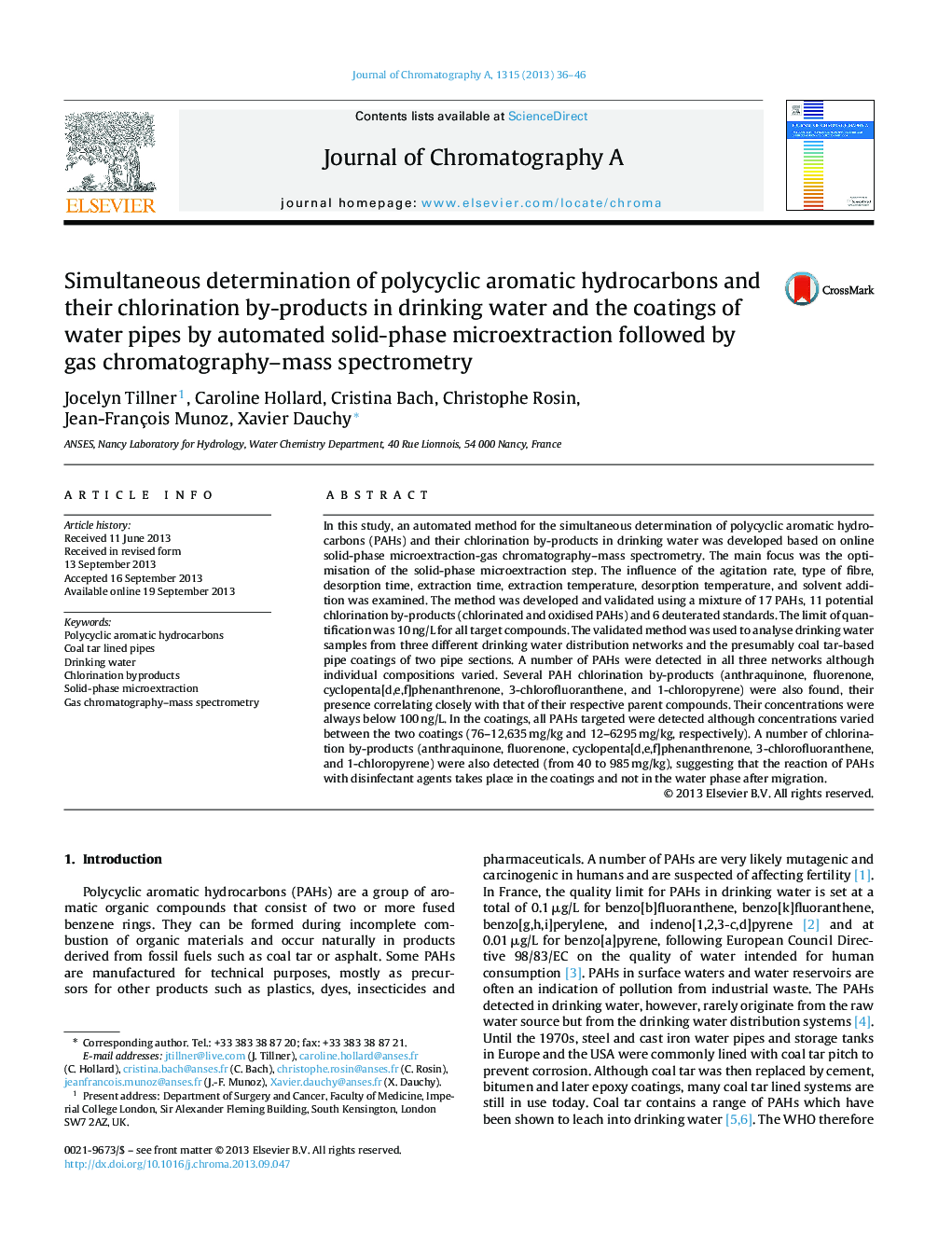| Article ID | Journal | Published Year | Pages | File Type |
|---|---|---|---|---|
| 1199870 | Journal of Chromatography A | 2013 | 11 Pages |
•An online SPME-GC–MS method is developed for PAHs and their chlorination by-products.•The limit of quantification is 10 ng/L for all target compounds.•The method is applied to drinking water samples and coal tar-based pipe coatings.•PAHs and chlorination by-products are detected in all samples.
In this study, an automated method for the simultaneous determination of polycyclic aromatic hydrocarbons (PAHs) and their chlorination by-products in drinking water was developed based on online solid-phase microextraction-gas chromatography–mass spectrometry. The main focus was the optimisation of the solid-phase microextraction step. The influence of the agitation rate, type of fibre, desorption time, extraction time, extraction temperature, desorption temperature, and solvent addition was examined. The method was developed and validated using a mixture of 17 PAHs, 11 potential chlorination by-products (chlorinated and oxidised PAHs) and 6 deuterated standards. The limit of quantification was 10 ng/L for all target compounds. The validated method was used to analyse drinking water samples from three different drinking water distribution networks and the presumably coal tar-based pipe coatings of two pipe sections. A number of PAHs were detected in all three networks although individual compositions varied. Several PAH chlorination by-products (anthraquinone, fluorenone, cyclopenta[d,e,f]phenanthrenone, 3-chlorofluoranthene, and 1-chloropyrene) were also found, their presence correlating closely with that of their respective parent compounds. Their concentrations were always below 100 ng/L. In the coatings, all PAHs targeted were detected although concentrations varied between the two coatings (76–12,635 mg/kg and 12–6295 mg/kg, respectively). A number of chlorination by-products (anthraquinone, fluorenone, cyclopenta[d,e,f]phenanthrenone, 3-chlorofluoranthene, and 1-chloropyrene) were also detected (from 40 to 985 mg/kg), suggesting that the reaction of PAHs with disinfectant agents takes place in the coatings and not in the water phase after migration.
